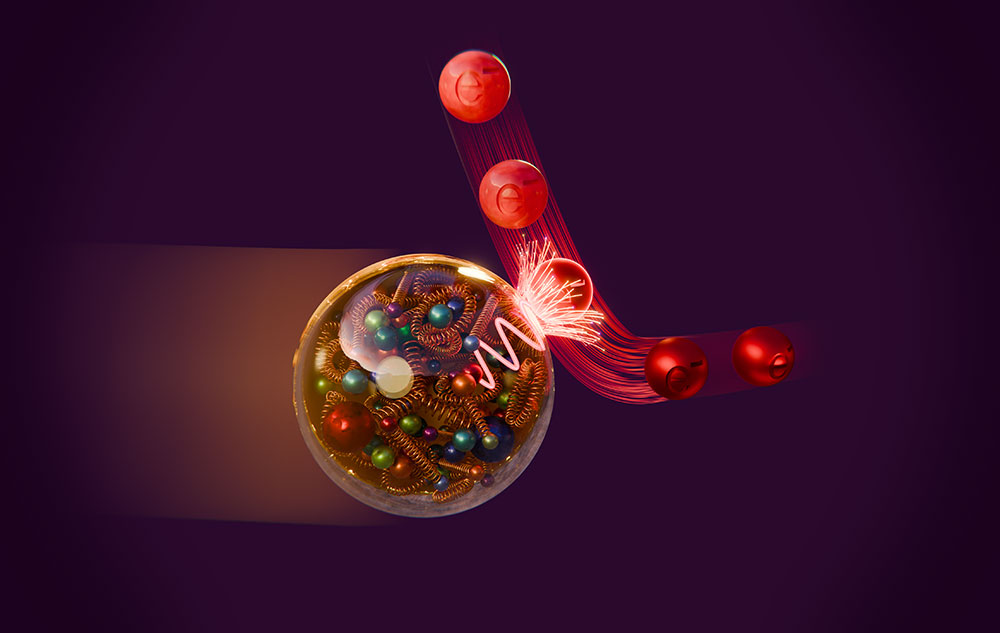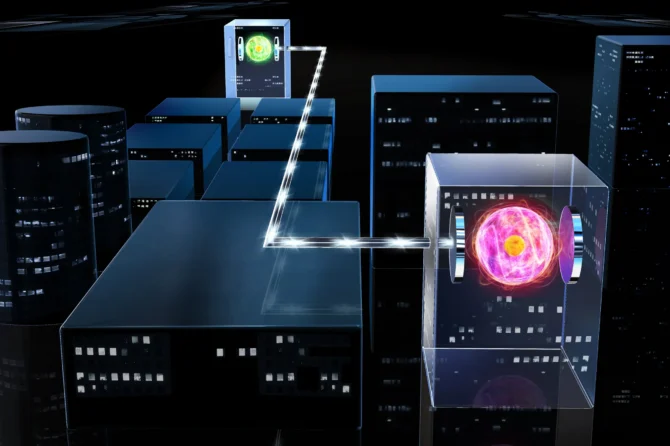The scientific community has made a groundbreaking discovery about the internal structure of protons, revealing a complex quantum landscape of entanglement among quarks and gluons. Researchers at Brookhaven National Laboratory have developed a novel approach using quantum information science to map the intricate interactions within these fundamental particles.
The study, published in Reports on Progress in Physics, demonstrates that quarks and gluons inside protons are not just static components, but dynamically entangled particles that share information across incredibly minute distances—less than one quadrillionth of a meter. This quantum entanglement fundamentally reshapes our understanding of proton structure, moving beyond traditional views of protons as simple collections of particles.
Physicist Zhoudunming (Kong) Tu and his colleagues analyzed high-energy electron-proton collision data to validate theoretical predictions about quantum entanglement. Their research shows that the distribution of particles emerging from these collisions is directly influenced by the entanglement of quarks and gluons within the proton.
Theorist Dmitri Kharzeev explained the concept through an entropy-based approach, comparing the particle distribution to the disorder in a messy bedroom. Maximally entangled quarks and gluons produce more randomly distributed particles, much like scattered laundry represents high entropy.
The implications of this research extend beyond fundamental particle physics. By understanding how quarks and gluons interact and share information, scientists can gain insights into complex nuclear physics phenomena. The team is particularly interested in exploring how a proton’s entanglement might change when embedded within a nucleus—a question they hope to investigate using the future Electron-Ion Collider (EIC).
This work represents a significant step in quantum information science, demonstrating how collective behavior emerges from individual particle interactions. Just as the temperature of boiling water emerges from the collective motion of water molecules, the properties of protons arise from the complex, interconnected quantum states of their constituent parts.
The research provides a promising framework for future experiments, offering new tools to probe the structure of visible matter. As co-author Krzysztof Kutak noted, these methods could push our understanding of fundamental particle interactions to new frontiers, revealing the intricate quantum dance happening within the smallest building blocks of matter.
Reference: “QCD evolution of entanglement entropy” by Martin Hentschinski, Dmitri E Kharzeev, Krzysztof Kutak and Zhoudunming Tu, 2 December 2024, Reports on Progress in Physics. DOI: 10.1088/1361-6633/ad910b


